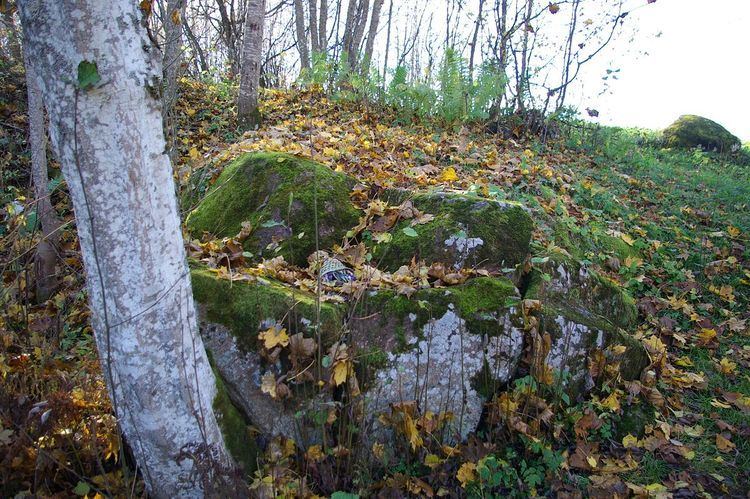 | ||
Jaanikivi (St John’s stone) is a sacrificial stone in Võru County, Meremäe rural municipality in Miikse village near Miikse church by Miikse Stream in Estonia.
Contents
Map of Jaanikivi, Miikse, 65319 V%C3%B5ru County, Estonia
General information
It is said that Saint John himself once sat on the rock, resting his feet. Even today some people believe that the stone has miraculous powers and sick persons are brought to the stone and a sore hand or foot pressed against its surface. The spring water from the Miikse Stream flowing near St. John's Stone (the so-called eye spring) is also believed to have a healing effect. St John’s stone is registered as an archaeological monument. During the time of Baltic-German landlords, the local landlord dismantled the rock into pieces and took the pieces in the cow-shelter wall. This kind of conduct, however, brought ruin and illnesses among the manor herd, so the landlord had the pieces of the rock taken back to its place.
Lore
Information in Eisen folklore poetry collection dating back to 1915: In Vastseliina parish, near Meeksi village (a Seto village near Pihkva border) by a small stream, that separates Liivi province from Pihkva province, there is a stone, where Seto people still bring sacrifices. The stone stands in Liivi province. It is called St John’s Stone. People say: St John used to sleep on the stone. Every St John’s Day, a Russian priest comes to the stone and Seto people from every corner of Setumaa come to the stone and bring sacrifice to St John. The sacrifices are mostly butter and eggs. If Servitude of God be ended, the priest takes half the sacrifice and the other half is for the poor. When Servitude of God is held, the river is said to have holy water in it and if the ill wash themselves in the water, the illness disappears. At one time, when a cow-shelter was made in Meeksi village, a piece was taken from St John’s stone and laid in the wall, so that cows would not die. When the shelter was finished, every year two-three cows still died. Then the piece of St John’s stone was taken from the wall and there were no deaths among the animals anymore. (E 49367 (1) < Vastseliina region — R. Tamm (1915)) According to the lore originating from 1953, cottage cheese and wool made exactly for this purpose were taken to the St John’s stone: A week before St John’s Day, St John’s milk was taken: the milk was skimmed and cottage cheese was made. It was taken to Meeksi and placed on the St John’s stone. Wool was also placed on the stone. Whatever was taken on the stone, the poor got for their own after. Those, who had something wrong with them, drove to Meeksi St John’s stone on St John’s Day. Who had something wrong with their eyes, wiped their eyes with a towel and put the towel on the stone. A spring is near the stone, water was taken from there to moisten (hämmäma) the eyes. (RKM II 44, 481/2 (11) < Vastseliina region, Obinitsa < Setumaa, Navike village — U. Mägi < Anna Kuusik, about 70 y (1953).
